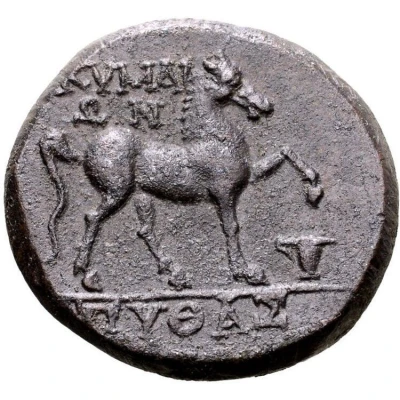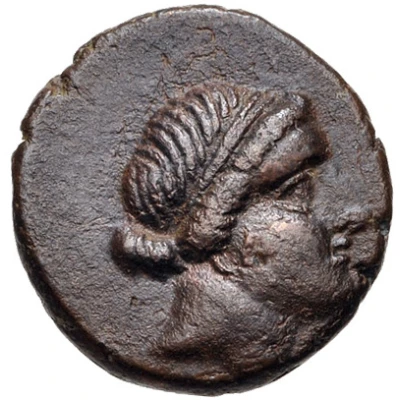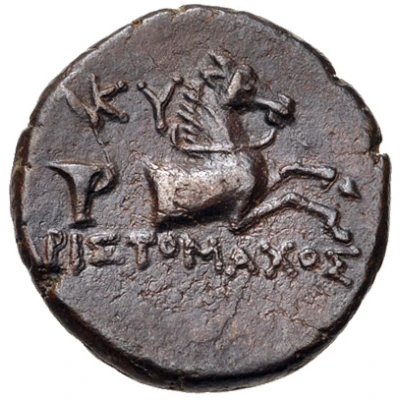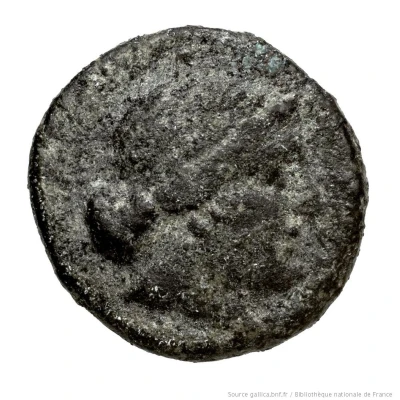
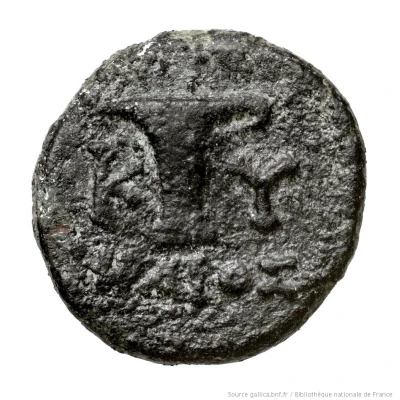

© Bibliothèque nationale de France
Æ12 250 BC - 190 BC
| Bronze | 1.3 g | 11.7 mm |
| Issuer | Kyme (Aeolis) |
|---|---|
| Type | Standard circulation coin |
| Years | 250 BC - 190 BC |
| Currency | Drachm |
| Composition | Bronze |
| Weight | 1.3 g |
| Diameter | 11.7 mm |
| Thickness | 2.2 mm |
| Shape | Round (irregular) |
| Technique | Hammered |
| Orientation | Variable alignment ↺ |
| Demonetized | Yes |
| Updated | 2024-10-09 |
| Numista | N#307969 |
|---|---|
| Rarity index | 93% |
Reverse
One-handled cup.
Script: Greek
Lettering:
KY
HΡAIOΣ
Translation: Heraios.
Comment
Magistrate Heraios.Interesting fact
The Æ12 coin from Kyme (Aeolis) was used as a form of currency in ancient Greece and has a unique design. One side of the coin features the image of a lion's head, while the other side features an inscription of the name of the city, "Kyme," in ancient Greek letters. This coin was issued during the Hellenistic period, which was a time of great cultural and economic change in the ancient Greek world. Despite its small size, this coin has a rich history and is a valuable artifact for collectors and historians today.

